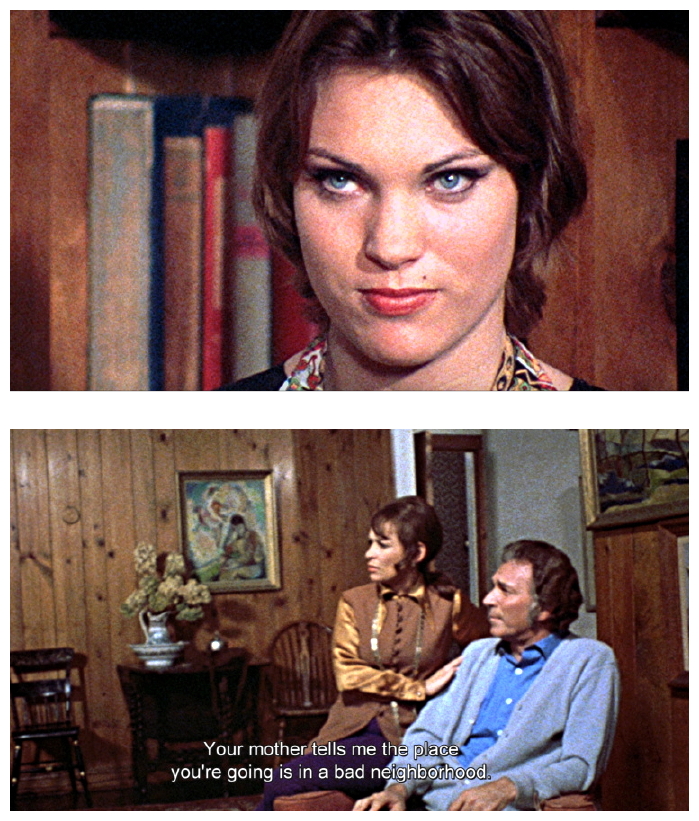There are films that stay with you long after the credits roll, films that linger in the corners of your mind, refusing to let go. Films that you’d rather forget but can’t, films that make you question the darkness within the human soul. The Last House on the Left, released in 1972, is one such film. This isn’t just a horror movie, it’s a visceral, unflinching, and brutal exploration of violence, revenge, and the fragile line between good and evil. But what happens when the line is blurred beyond recognition?

Image: horrornews.net
The film’s legacy is one of controversy, its reputation punctuated by accusations of exploitation, sensationalism, and tasteless violence. It’s been banned in several countries, and many, even today, consider it to be an affront to morality. Yet, there’s a undeniable power in its storytelling. The Last House on the Left, especially in its “uncut” form, presents a stark and uncompromising look at the consequences of unchecked brutality. It’s a film that forces you to confront your own humanity, to ask yourself where you stand in the face of unimaginable suffering.
The Uncut Trauma: A Deeper Dive into the Unrated Version
The film’s notoriety is largely tied to its “uncut” version. This isn’t a case of a few extra seconds of gore; the unrated version is a significantly different beast. It features explicit scenes of violence that were omitted from the R-rated theatrical release, scenes that pushed the boundaries of what was considered acceptable in 1972. These additions aren’t gratuitous; they are crucial parts of the story. While the theatrical release focused on suspense and psychological terror, the uncut version emphasizes the graphic reality of the events unfolding. Every act of violence is unflinchingly portrayed, leaving viewers with an unmistakable sense of dread.
Beyond the Violence: Exploring the Uncut’s Significance
The unrated version isn’t just about shocking the audience with graphic content. It adds a layer of complexity that elevates the film from a simply brutal exploitation flick to a nuanced exploration of human psychology. By showing the brutality in its rawest form, the unrated cut forces viewers to confront the ugliness of the world and consider its impact on the characters. Director Wes Craven, known for his masterful work in horror, uses the unrestrained violence to create an atmosphere of unrelenting tension that permeates the entire film.
The Legacy of The Last House on the Left: More than Just a Film
The Last House on the Left has, undeniably, had a lasting impact on the horror genre. It’s been cited as an inspiration for numerous filmmakers, leading to a wave of “rape-revenge” films throughout the 1970s and 80s. While many of these films fell into gratuitous exploitation, The Last House on the Left deserves credit for its audacity in exploring such taboo subjects. It broke down traditional cinematic barriers, pushing the boundaries of what was considered acceptable, and sparking conversations about violence, revenge, and the nature of evil.
The film has also sparked debate about artistic merit and censorship. Critics have argued that the film’s graphic nature is exploitative and unnecessarily violent. Others defend it as a powerful and necessary exploration of darkness, arguing that it is a more honest reflection of real-world atrocities than many other fictional portrayals. The Last House on the Left remains a film that divides audiences, but there’s no denying its cultural significance. It challenges viewers to confront their own views on violence and morality, and it continues to be a source of heated debate even decades after its release.

Image: www.imdb.com
The Last House On The Left 1972 Uncut
Conclusion
The Last House on the Left, in its uncut version, remains a potent and challenging film. It’s a film that isn’t for the faint of heart, one that forces us to confront the darkest corners of our own humanity. It’s a film that you won’t forget, a film that will stay with you long after you’ve seen it. Whether you view it as a powerful commentary on violence and its consequences or an exploitative piece of cinema, there’s no denying its impact on the horror genre and on our understanding of the human condition. The uncut version of The Last House on the Left isn’t just a film; it’s an experience, a visceral and unforgettable journey through the darkest depths of human nature.






